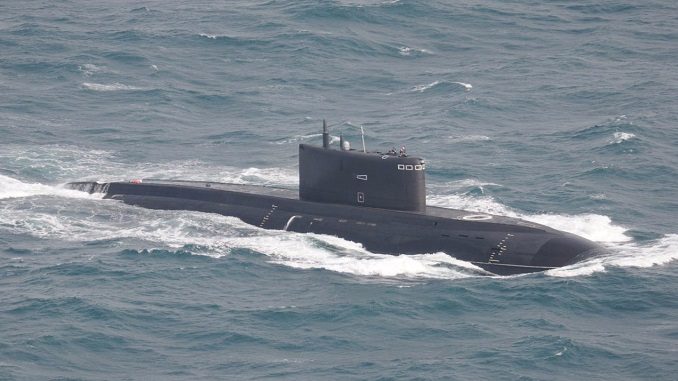
Russian submarine activity in the Atlantic Ocean and the Mediterranean Sea has increased, NATO officials have warned.
According to them, this is the highest-level of undersea activity from Moscow since the Cold War. Jens Stoltenberg, secretary general of the alliance says that additional 13 submarines had been added to the Russian fleet in the last three years.
“Russia has massively invested in its marine capability, especially in submarines. Russia’s submarine activity is now at its highest level since the Cold War,” he told German newspaper Frankfurter Allgemeine Sonntagszeitung.
Stoltenberg added that the Russians were now operating closer to the shores of NATO and across the Atlantic. The alliance’s top submarine commander, Rear Adm. Andrew Lennon, stated the same as Stoltenberg.
“Russian submarine activity is higher now in the last three years than it has been since the Cold War. What we have observed over the past three years are more deployments annually of Russian submarines away from their local waters than we have observed in the prior decade,” Lennon said.
For years Russia has used its submarine fleet to roam around North Atlantic seas close to rival countries’ shorelines and it has heightened tensions with the alliance on land and air, Newsweek reports and adds that the Russians flew close to NATO’s jets and hosted military exercises in close proximity to NATO territory.
Now, there are fears that Moscow could use its presence in the waters near the territories of NATO to impact underwater communication lines. Those lines provide internet for Europe and North America and Russia could damage them or tap into them, gathering intelligence.
“We are now seeing Russian underwater activity in the vicinity of undersea cables that I don’t believe we have ever seen,” Lennon explained.
If those cables are affected, that could impact trillions of dollars worth of global trade. If they are breached, Russia could have intelligence picture of the entire internet.
“They can do oceanographic research, underwater intelligence gathering. And what we have observed is an increased activity of that in the vicinity of undersea cables. We know that these auxiliary submarines are designed to work on the ocean floor, and they’re transported by the mothership, and we believe they may be equipped to manipulate objects on the ocean floor,” Lennon said.

Be the first to comment